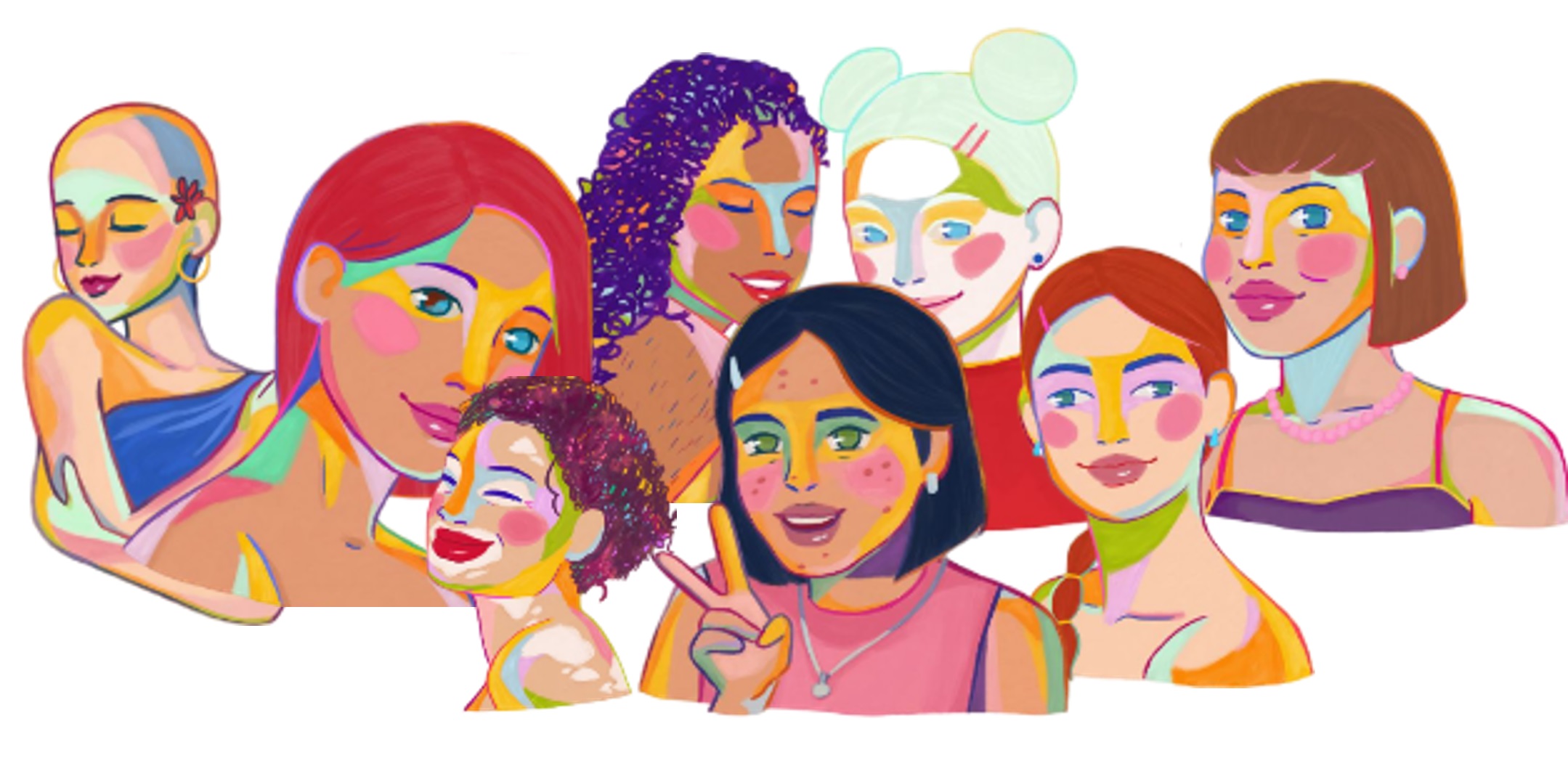 Self-esteem Self-esteem
What is self-esteem?Click to read 
Self-esteem is the evaluation we make of ourselves, based on all the thoughts, feelings, sensations and experiences we have gathered throughout our lives.
Self-esteem:
 |
It is a key factor for the development of an adequate emotional and social adjustment.
|
 |
It is dynamic.
|
 |
It is learned.
|
It is the basis of our personality:
 |
Promotes learning.
|
 |
Helps to overcome personal difficulties.
|
 |
Enables the establishment of healthy social relationships.
|
 |
Produces general satisfaction in life.
|
 |
Helps to cope with stress more effectively.
|
 |
Increases quality of life.
|
 |
Stimulates personal autonomy.
|
 |
Drives future projection.
|
 |
Develops creativity.
|
Components of Self-EsteemClick to read 
 |
Cognitive component: it is the personal self-concept, how a person perceives himself/herself taking into account his/her personality, thoughts, beliefs, attitudes, etc.
|
 |
 |
Affective Component: it is the result of a person's evaluation of himself/herself, that is, a value judgment of self-perception.
|
 |
Behavioral Component: refers to the behavior or performance of each person according to each person's assessment of him/herself.
|
- Self-esteem refers to the concept we have of ourselves, according to subjective qualities:
INDIVIDUALITY + LIFE HISTORY + SOCIAL SCOPE
- It may vary according to the field (work, family, social, etc.).
Gender barriers to women's self-esteem. Click to read 
 |
Women start from a lower social valuation than men and for that reason, low self-esteem is more frequently found in women, especially in those who have grown up in a family with traditional roles.
|
- We suffer the first gender discrimination based on sex at birth.
- Discrimination in the workplace, at certain educational levels, politics, sports, culture, the street, the media and fundamentalist religions.
- Women are named and treated in second place.
- We receive an education based on control, dependence, guilt and fear.
- We are educated to serve, care for and educate others.
- This education results in problems of inferiority, insecurity, mistrust and impotence, that is, low self-esteem.
|
If we experimented as girls:
- A constant criticism of our deeds, our physical appearance, our capacities or our behavior...
- In a hostile environment where we are undervalued...
- In an environment dominated by fear...
- If we were pitied because of our physical appearance or our lack of intellectual capacities...
- If we were ridiculed...
- In a culture where women are dedicated to education and care...
- In a society where the important jobs are occupied by men...
- In a society that demands us to be perfect...
- In a patriarchal system...
|
 |
|
We learned to:
- ...we learned to make demands on ourselves.
- ...we learned to fight.
- ...we learned to live in fear.
- ...we learned to feel sorry for ourselves.
- ...we learned to be shy.
- ...we learned to take care of our daughters/daughters, elders and husbands.
- ...we learned to try twice as hard.
- ...we learned not to fail or make mistakes.
- ...we learned to fight for gender equality.
|
 |
Reflect upon the following questions:
- What have I done for myself?
- How have I loved myself?
- What do I do to love myself?
- What do I like about myself?
- What don't I like about myself and would like to improve?
Things to keep in mind to answer the questions on the line of my self-esteem:
- How I take care of my body
- How I take care of my diet
- How I spend my time
- How I live my sexuality
- How I take care of my friendships
- How have my affective relationships been
- Where my thoughts are (past, present and/or future)
- What I do that I like
- What sacrifices I make
- I ask for help when I need it
Low and High Self-EsteemClick to read 
|
Indicators of low self-esteem:
- Is very critical of herself
- Lacks self-confidence
- Exaggerates mistakes
- Insecure for fear of being wrong
- Demands a lot from herself
- Great need to please
|
 |
Indicators of high self-esteem:
- Has confidence in his capabilities
- Knows his personal limits
- Respects opinions even if he/she does not always share them
- Accepts their emotions and feelings
- Has a positive attitude towards life
|
 |
Positive self-esteem occurs when the personal value judgment arouses a feeling of satisfaction and pleasure.
|
|
The Rosenberg self-esteem scale is the most widely used scale to evaluate the level of self-esteem of each person. Do you want to know how your self-esteem is?
Rosenberg self-esteem scale
|
 |
It is important to look at ourselves and see ourselves. To do this, we propose the mirror technique. It is a simple activity that you can do when you have a 10 minute break before leaving the house, before taking a shower, when you are getting ready for work, etc.
|
|
Stand in front of the mirror and answer the following questions:
- What do you see in the mirror?
- What does the person looking back at you from the mirror look like?
- Do you know the person?
- What good things does that person have?
- What bad things does that person have?
- What do you like most about that person?
- Would you change anything about the person in the mirror?
|
 |
Modifiable negative thoughtsClick to read 
|
 Overgeneralization: From an isolated fact a universal, general rule is created for any situation and time: I have failed once (in something concrete); I will always fail! Overgeneralization: From an isolated fact a universal, general rule is created for any situation and time: I have failed once (in something concrete); I will always fail!
 Global designation: Pejorative terms are used to describe oneself, instead of describing the error by specifying the moment in time when it happened: How clumsy I am! Global designation: Pejorative terms are used to describe oneself, instead of describing the error by specifying the moment in time when it happened: How clumsy I am!
 Polarized thinking: All-or-nothing thinking. Things are taken to extremes. Absolute categories. Relative evaluations are not accepted or known. Polarized thinking: All-or-nothing thinking. Things are taken to extremes. Absolute categories. Relative evaluations are not accepted or known.
 Self-accusation: One finds oneself guilty of everything. I am to blame, I should have realized it! Self-accusation: One finds oneself guilty of everything. I am to blame, I should have realized it!
|
 |
|
 Personalization: We assume that everything has to do with us and we compare ourselves negatively with other people. He looks bad, what have I done to him! Personalization: We assume that everything has to do with us and we compare ourselves negatively with other people. He looks bad, what have I done to him!
 Thought reading: You assume that others are not interested in you, that they don't like you, you think they think badly of you... without real evidence of it. These are assumptions that are based on unprovable things. Thought reading: You assume that others are not interested in you, that they don't like you, you think they think badly of you... without real evidence of it. These are assumptions that are based on unprovable things.
 Control fallacies: You feel that you have total responsibility for everything and everyone, or you feel that you have no control over anything, that you are helpless. Control fallacies: You feel that you have total responsibility for everything and everyone, or you feel that you have no control over anything, that you are helpless.
 Emotional reasoning: If I feel this way it is true. We feel alone, without friends and we believe that this feeling reflects reality without stopping to contrast it with other moments and experiences. "If I am really useless"; because it "feels" that it is really so. Emotional reasoning: If I feel this way it is true. We feel alone, without friends and we believe that this feeling reflects reality without stopping to contrast it with other moments and experiences. "If I am really useless"; because it "feels" that it is really so.
|
 |
Words have a great power over our perception of ourselves and the situations we face on a daily basis. At this moment we propose you to work on modifiable negative thoughts using words as tools.
Here are a series of phrases that you will have to modify in order to positively influence your thinking.
Modifiable negative sentences:
- I am clumsy and I always mess up when I have to expose something.
- I am not capable of running my own business.
- I am insecure.
- I don't like my body.
- I am not capable of running a house, taking care of my children and also being an entrepreneur.
Now it's your turn!
- What are your negative thoughts that can be modified?
- Use "The Power of the Word" to modify them.
We modify the negative assumptions:
- I am learning to control my nerves to say exactly what I want to say.
- I don't feel ready to run my own business but I am preparing myself for it because with the right knowledge I am capable of doing it.
- There are situations that make me feel insecure but I am learning to manage my feelings.
- Not every part of my body I like, but there are many that I love.
- I am capable of doing a lot of things, but I have the need to find a gap to prioritize me.
Good Self-EsteemClick to read 
|
ALL people need:
- To feel safe
- To be loved and accepted
- To be integrated
- To feel accepted for who we are
- To have recognition and approval
- To be autonomous
- To be free to think and act
- To empower our capabilities
|
When these basic needs for our proper emotional development are not met, we grow up with a series of deficiencies that have a negative impact on our conception of ourselves.
|
 |
Symptoms of Good Self-Esteem:
- You believe you are worthy of happiness, respect and act in favor of receiving it.
- You influence your thinking, emotions, happiness, desires and goals.
- You develop the ability to respect yourself and feel proud of yourself, even when you make mistakes.
- You have an assertive attitude, you know how to say NO, you respect your values and limits.
- You never compare yourself with others.
- You have a sense of direction and control in your life, you face problems and difficulties.
- You act independently and interdependently, take responsibility and are willing to support others.
- You are able to take on new challenges and can take criticism without feeling hurt.
- You feel happy, it is an integral part of your relationships and the achievement of your goals.
- You are in control of your life, it empowers you to do what you want to do and is the source of your mental health.
Working on my Self-Esteem: The best storyteller.
Our head plays tricks on us. Sometimes "low self-esteem" can make us wander and create false stories or expectations that can make us feel bad and insecure.
For example, Clara spends her free time knitting, from clothes to blankets. The other day she was walking down the street with her latest garment, a knitted sweater with wide sleeves and "oversize" and a young girl stared at her. Clara's low self-esteem, whom she likes to call "La Culebra", starts to tell her: "You look ridiculous", "She stares at you because she is horrified by the way you are dressed", "Stop wasting your time with that crap you wear to go down the street where everyone can see you". Clara's head makes her think: "I'm sure she stares at me because she doesn't like my sweater at all, she's probably thinking: where did I buy this so I'll never go to that store. I hope she doesn't imagine that I made it myself."
Our poor self-esteem can lead us to negative thinking. From now on we propose you to be "the best storyteller". Why always stick with the worst version of the story? The new Clara thinks: "I love the way I'm dressed, how proud I am of myself, I'm sure that girl loves the outfit I'm wearing. Maybe I could start thinking about selling my clothes".
|
Learn how to be "the best storyteller", choose one of the pictures we have selected for you. Now you will have to think of three stories:
- Objective story: what do you see. At this point you are not interested in giving your opinion or your perception. Just describe what you see in the picture.
- Negative story: what you perceive. From your point of view, what do you think is happening in each of the images. Let your negative side speak.
- Positive story: what do you perceive. From your point of view, what do you think is happening in each of the images. Let your more positive side speak.
Why always stick with the worst version of the story?
|
 |
Self-confidence, Self-worth and Self-knowledgeClick to read 
|
Self-confidence is the ability to believe in oneself.
 It is the development of positive thinking about what is going to happen. It is the development of positive thinking about what is going to happen.
 The establishment of stimulating objectives, with a realistic perspective. The establishment of stimulating objectives, with a realistic perspective.
 The conviction that we are capable of doing whatever we set out to do. The conviction that we are capable of doing whatever we set out to do.
|
 |
|
Self-knowledge is the basis of self-esteem. It is the image of ourselves that we form based on our self-perceived capabilities and characteristics.
Self-worth is the way in which we judge ourselves in the different areas of our lives.
SELF-KNOWLEDGE + SELF-WORTH = SELF-ESTEEM
What I think I am + What I feel I am = SELF-ESTEEM
|
 |
The Johari window
It is a cognitive psychology tool built by psychologists Joseph Luft and Harrington Ingham. It helps us to know how we perceive ourselves and how others perceive us.

It's time to reflect on who you are, who you are, do you know yourself, do others know you? Solve these questions by filling in the blanks.
|
Write 5 qualities that describe you:
|
What qualities do your closest people know about you? Ask your closest people, don't put what you think or believe:
|
Which of these qualities contributes the most to improving your self-esteem?
|
|
What aspects of yourself are you most proud of?
|
What would you like to improve about yourself?
|
Is your inner dialogue positive or negative and how could you modify it?
|
Positive Effects of Self-Esteem Development
- Promotes learning.
- Helps to overcome personal difficulties.
- Helps to cope with stress more effectively.
- Stimulates personal autonomy.
|
 |
- Develops creativity.
- Produces general satisfaction with life.
- Boosts future projection.
- Increases life quality.
- Helps to establish healthy social relationships.
|
Multifunctional women have numerous qualities and capabilities. It is important not only to recognize them, but also to value them positively. This in turn will improve our perception of ourselves and help us to improve our self-confidence.
 |
We help you to assess your qualities and capabilities...
- Make a list of all the tasks and activities you perform during the day.
- Make a list of the knowledge needed to carry out those activities.
- Make a list of the skills needed to carry out those activities.
- Reflect on the value of your knowledge and skills to be able to perform all these tasks.
This list will be your resource to remind you how much you are worth.
|
Reflect on the judgment you make on yourself, are you or are you not fair with yourself... Here is an exercise to make you aware of your merits and your mistakes, and how you feel about them. Remember that your mistakes are not failures, they are experiences that will allow you to improve in the future.
|
Describe a situation that you are proud of, where something went well for you:
- How did you feel? Name the emotions you experienced, be as detailed as possible.
- How did you achieve it? What qualities of yours favored your success?
- How did it influence your self-esteem?
|
Describe a situation in which you did not get things right, made a mistake or made a mistake:
- How did you feel? Name the emotions you experienced, be as detailed as possible.
- Why do you think this situation happened? What qualities of yours do you think could be useful the next time you face this situation?
- How did this event influence your self-esteem?
|
How to improve my Self-EsteemClick to read 
 Treat each other with affection and respect, always. Treat each other with affection and respect, always.
 Develop your potential through activities you are passionate about. Develop your potential through activities you are passionate about.
 Accept and forgive ourselves. Accept and forgive ourselves.
 To have compassion, to talk to each other as we would talk to a good friend. To have compassion, to talk to each other as we would talk to a good friend.
 Set realistic goals. Set realistic goals.
 LOVE YOURSELF AS YOU ARE LOVE YOURSELF AS YOU ARE
 Thinking positively about ourselves (taking care of our internal dialogue). Thinking positively about ourselves (taking care of our internal dialogue).
 Assertive attitude (Know our limits and values, respect them and make them respected). Assertive attitude (Know our limits and values, respect them and make them respected).
 Recognize and enjoy your small achievements. Recognize and enjoy your small achievements.
 Giving the gift of time and self-care. Giving the gift of time and self-care.
 Self-knowledge (values, interests, tastes, strengths). Self-knowledge (values, interests, tastes, strengths).
 Choose our environment, keep away the toxic. Choose our environment, keep away the toxic.
|
It's time to work on your self-esteem...
Get creative, put a name and a face to your low self-esteem. What is the image that first comes to your mind? What name do you think fits better? From now on you know who your low self-esteem is, it has a name and a face. It is the culprit of your destructive thoughts, of your insecurities. Every time she appears in your daily life you are going to answer her, you are going to tell her to shut up, everything is allowed in this interaction.
The battle
In your intimacy have a conversation with her. You will play the role of both, first as yourself, and then as your obnoxiously low self-esteem. State both your points of view and your arguments.
You'll see how you'll quiet that annoying little voice.
|
My low self-esteem: "You are not worth doing anything".
Me: "Of course I am worth, I am capable of many things, I am very valuable".
My low self-esteem: "You are fooling yourself, but not me, I know how you really are".
Me: "Shut up, you don't really know me, I am a fighter, I am an entrepreneur, I take care of my family, I take care of myself, I educate my children, I am proud of myself".
|
 |
 What is motivation? What is motivation?
MotivationClick to read 
Motivation is defined as that which guides and drives us to carry out actions and make decisions in order to achieve an objective or satisfy a need.
|
INTRINSEC:
Motivation of a person when he acts in a way or performs a task for the mere pleasure of doing it. That is, the behavior itself is what satisfies the individual, and that is why he or she performs it. It is not an external motivation, but comes from within, from ourselves.
Example: Seamstress who knits in her free time for the pleasure of doing it because it allows her to escape from work and household chores.
|
EXTRINSIC:
Motivation that comes from a stimulus that comes from the outside. This means that the fact of performing the task does not come from the mere pleasure of doing it, but is done with an end in mind.
Example: Livestock farmer who gets up every morning at dawn to take care of her animals for their welfare and to be able to continue her work.
|
Types of motivationClick to read 
 |
POSITIVE:
This is starting a series of activities in order to achieve something that is desirable and enjoyable, having a positive connotation. It is accompanied by an achievement or well-being when doing the task that reinforces the repetition of the task.
NEGATIVE:
Refers to the process by which a person initiates or remains adherent to a behavior to avoid an unpleasant consequence, either external (punishment, humiliation, etc.) or internal (avoiding the feeling of frustration or failure).
|
The Motivation CycleClick to read 
|
To improve our motivation we have to promote:
 Positivity Positivity
 Commitment and responsibility Commitment and responsibility
 Company and support Company and support
|
 |
Motivation StrategiesClick to read 
|
Search for strategies, according to our objective
- Rewards, especially for less motivating tasks
- Celebration of goals
- Music
- Cared for and/or shared workspaces
- Checklist
- Exercise
- Energy regulation
- Breaks
- Connecting with emotions
|

|
Working on my Motivation: Hitting the BullseyeClick to read 
| Write down 3 objectives, think and reflect on an action you are taking to achieve or develop them. If you can't find one and you want to, write it down and plan it. |
 |
|
OBJECTIVES
(Interests, motivations, personal development, values, family, employment, training/studies, leisure and free time, etc.)
|
|
Objective
|
Action
|
|
1.
|
|
|
2.
|
|
|
3.
|
|
 Summing up Summing up
Summing upClick to read 
 |
Self-esteem
It is essential to work towards a healthy self-esteem that allows us to develop socially and personally as an essential component of self-care.
|
 |
Motivation
Part of our self-esteem is the achievement of our goals. Achieving them depends to a great extent on motivation. It is necessary to find the right strategies that allow us to develop our motivation to guide us on the path to achieve our goals.
|
|
 Test Yourself
Test Yourself









